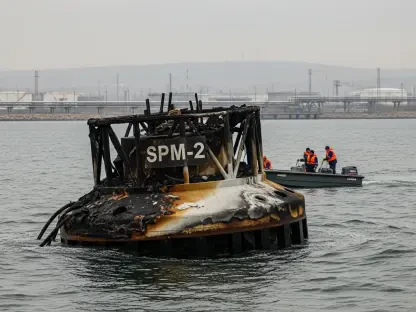In a rapidly shifting global landscape, the United States finds itself at a critical juncture, seeking to secure strategic partnerships in regions long overshadowed by competing powers, particularly in Central Asia. This resource-rich hub, nestled between Russia and China, has emerged as a pivotal battleground for geopolitical influence due to its vast reserves of critical minerals essential for modern technology and green energy. The recent high-level engagement between U.S. President Donald Trump and leaders from Kazakhstan, Kyrgyzstan, Tajikistan, Turkmenistan, and Uzbekistan signals a determined push by Washington to carve out a foothold in this historically complex region. Hosted at the White House, this meeting underscores an urgent need to diversify supply chains and reduce dependency on adversaries for vital resources like uranium and rare earth elements. As global competition intensifies, the stakes for securing economic and security ties with these nations have never been higher, setting the stage for a nuanced diplomatic effort.
Strategic Diplomacy in a Contested Region
Building Bridges Through the C5+1 Platform
The C5+1 platform, a diplomatic framework fostering collaboration on economic, energy, and security issues, served as the cornerstone for the recent White House summit between U.S. leadership and Central Asian heads of state. This meeting marked a significant step in strengthening ties with Kazakhstan, Kyrgyzstan, Tajikistan, Turkmenistan, and Uzbekistan, nations collectively holding immense strategic value due to their geographic position and resource wealth. Beyond mere dialogue, the discussions emphasized a mutual interest in countering the entrenched influence of neighboring powers through targeted cooperation. A key outcome was the symbolic commitment to deepen government-to-government engagement, reflecting a broader U.S. strategy to present itself as a reliable partner. This approach aims to address shared concerns, from regional stability to economic development, while subtly positioning American interests as an alternative to the dominant regional players.
Symbolic Gestures and Broader Implications
Beyond the formal talks, the White House dinner hosted for Central Asian leaders carried deeper significance, signaling a renewed American commitment to the region. This gesture of hospitality was paired with diplomatic milestones, such as Kazakhstan’s decision to join the Abraham Accords, normalizing relations with Israel alongside other Muslim-majority nations. Such moves highlight a multifaceted U.S. strategy that extends beyond immediate economic gains to include broader geopolitical alignment. The emphasis on cultural and diplomatic rapport underscores an understanding that influence in Central Asia cannot be secured through transactional deals alone. Instead, fostering trust and shared values forms a critical component of Washington’s long-term vision, aiming to create a counterbalance to the historical and economic dependencies that tie the region to other global powers. This nuanced approach seeks to lay the groundwork for sustained collaboration in a highly contested arena.
Economic and Resource Security as Core Priorities
Securing Critical Minerals for Global Needs
Central Asia’s vast deposits of uranium, copper, gold, and rare earth elements position it as a linchpin in the global supply chain for technology and green energy solutions. Kazakhstan alone accounts for a significant share of the world’s uranium production, while Uzbekistan ranks among the top global producers, making their combined output vital for nuclear power industries worldwide. The U.S., currently reliant on foreign sources for a substantial portion of its uranium needs, views partnerships with these nations as essential for diversifying supply chains and enhancing energy security. A memorandum of cooperation on critical minerals signed with Kazakhstan during the recent summit represents a concrete step toward this goal, though specifics remain under wraps. This focus on resource security reflects a broader urgency to mitigate risks associated with over-dependence on rival nations that control key segments of the global market for strategic materials.
Commercial Deals to Bolster Economic Ties
In parallel with government-level agreements, commercial partnerships emerged as a vital pillar of U.S. engagement with Central Asia during the recent discussions. Notable among these was Boeing’s agreement to supply up to 37 airplanes to airlines across Kazakhstan, Tajikistan, and Uzbekistan, a deal that strengthens economic ties while supporting American industry. Additionally, Cove Capital, a U.S.-based firm, secured a contract to mine tungsten in Kazakhstan with government-backed financing, highlighting the role of private sector initiatives in advancing strategic objectives. These business arrangements underscore a dual approach that combines diplomatic outreach with tangible economic collaboration, aiming to create mutually beneficial outcomes. By fostering such investments, the U.S. seeks to establish a presence in the region’s resource and infrastructure sectors, challenging the dominance of other major players who have long held sway over Central Asia’s economic landscape through extensive mining and development projects.
Navigating a Complex Geopolitical Landscape
Challenges of Historical Dependencies
The intricate web of historical and economic ties binding Central Asia to its former Soviet ruler, Russia, presents a formidable challenge to U.S. ambitions in the region. Despite decades of independence, many of these nations maintain strong connections with Moscow, both culturally and through trade networks, complicating efforts to shift their geopolitical orientation. Simultaneously, China’s growing footprint, marked by substantial investments in infrastructure and mining, adds another layer of complexity to the equation. The U.S. must navigate this landscape with a keen understanding of these entrenched relationships, recognizing that influence cannot be gained overnight. Expert insights suggest that targeted, high-impact projects are essential for Washington to demonstrate value as a partner, particularly in areas like technology transfer and sustainable development, where rival powers have already made significant inroads over the years.
Crafting a Multi-Pronged Strategy
To address the multifaceted challenges in Central Asia, the U.S. has adopted a comprehensive strategy that extends beyond resource acquisition to include alternative trade routes and energy partnerships. This approach seeks to bypass traditional pathways controlled by geopolitical rivals, offering the region new avenues for economic growth and connectivity. By focusing on infrastructure projects and energy diversification, American policy aims to present viable alternatives that reduce reliance on dominant neighbors. The emphasis on long-term partnerships, rather than short-term gains, reflects an awareness of the region’s strategic importance in the broader context of global competition. With a population of 84 million and significant economic potential, Central Asia offers a promising market for collaboration, provided the U.S. can balance its interests with the unique political and cultural dynamics at play. This calculated effort aims to build resilience against external pressures while fostering mutual benefits.
Reflecting on a Pivotal Moment
Looking back, the diplomatic engagement at the White House with Central Asian leaders marked a defining chapter in U.S. efforts to reshape influence in a region of critical importance. The blend of high-level talks, symbolic gestures, and concrete agreements underscored a deliberate push to secure resources and build alliances amid fierce global competition. Moving forward, the focus must remain on translating these initial steps into sustainable partnerships, prioritizing projects that address local needs while aligning with broader strategic goals. Strengthening economic ties through continued investment and supporting regional stability will be key to maintaining momentum. As the geopolitical landscape evolves, a commitment to adaptability and collaboration could position the U.S. as a trusted partner, paving the way for innovative solutions to shared challenges and ensuring access to vital resources for years to come.









